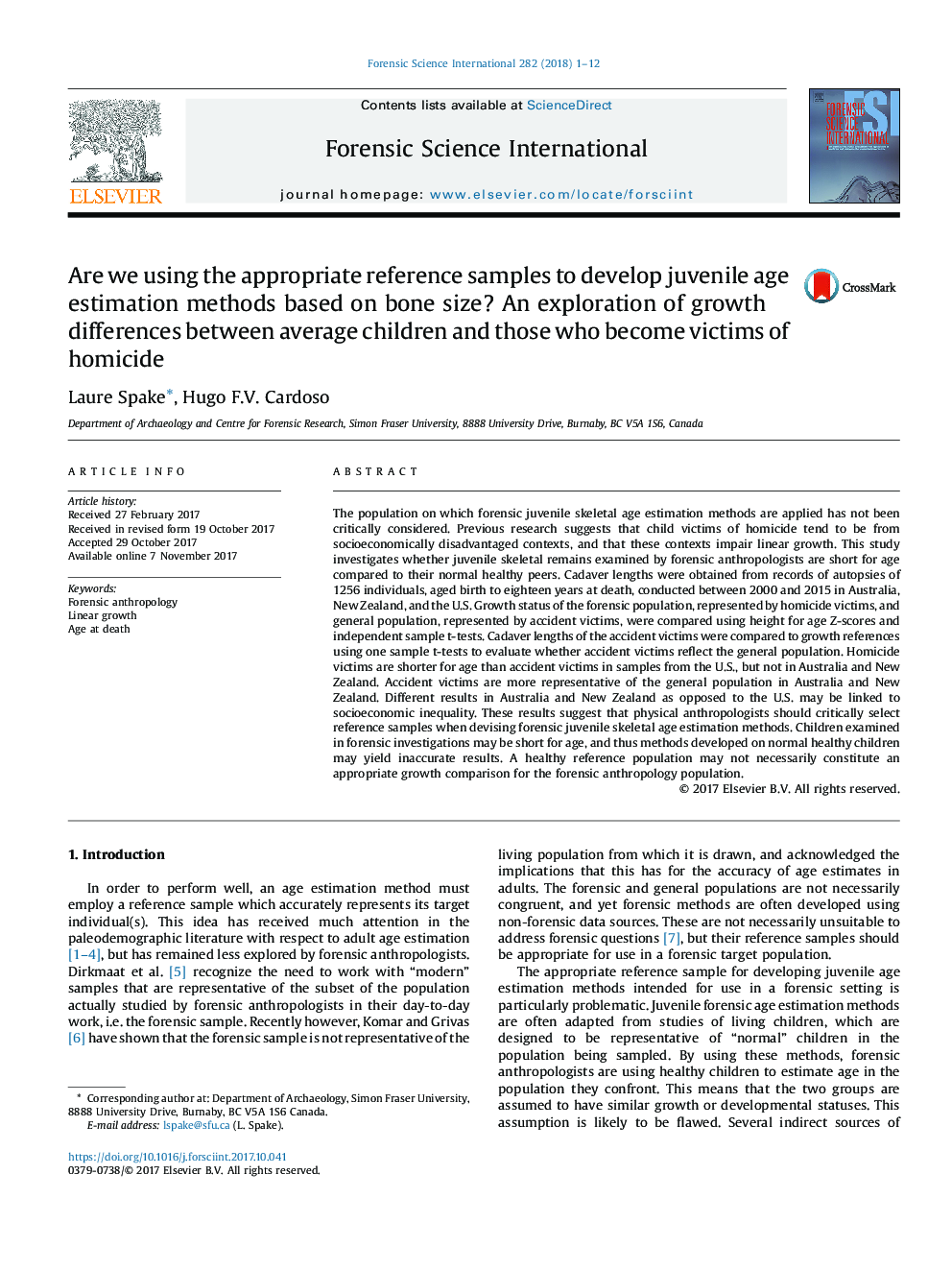| کد مقاله | کد نشریه | سال انتشار | مقاله انگلیسی | نسخه تمام متن |
|---|---|---|---|---|
| 6551351 | 1421968 | 2018 | 12 صفحه PDF | دانلود رایگان |
عنوان انگلیسی مقاله ISI
Are we using the appropriate reference samples to develop juvenile age estimation methods based on bone size? An exploration of growth differences between average children and those who become victims of homicide
ترجمه فارسی عنوان
آیا ما از نمونه های مرجع مناسب برای توسعه روش های تخمین سن نوجوانان بر اساس اندازه استخوان استفاده می کنیم؟ اکتشاف اختلافات رشدی میان کودکان متوسط و کسانی که قربانی قتل می شوند
دانلود مقاله + سفارش ترجمه
دانلود مقاله ISI انگلیسی
رایگان برای ایرانیان
کلمات کلیدی
انسان شناسی قانونی، رشد خطی، سن در مرگ،
موضوعات مرتبط
مهندسی و علوم پایه
شیمی
شیمی آنالیزی یا شیمی تجزیه
چکیده انگلیسی
The population on which forensic juvenile skeletal age estimation methods are applied has not been critically considered. Previous research suggests that child victims of homicide tend to be from socioeconomically disadvantaged contexts, and that these contexts impair linear growth. This study investigates whether juvenile skeletal remains examined by forensic anthropologists are short for age compared to their normal healthy peers. Cadaver lengths were obtained from records of autopsies of 1256 individuals, aged birth to eighteen years at death, conducted between 2000 and 2015 in Australia, New Zealand, and the U.S. Growth status of the forensic population, represented by homicide victims, and general population, represented by accident victims, were compared using height for age Z-scores and independent sample t-tests. Cadaver lengths of the accident victims were compared to growth references using one sample t-tests to evaluate whether accident victims reflect the general population. Homicide victims are shorter for age than accident victims in samples from the U.S., but not in Australia and New Zealand. Accident victims are more representative of the general population in Australia and New Zealand. Different results in Australia and New Zealand as opposed to the U.S. may be linked to socioeconomic inequality. These results suggest that physical anthropologists should critically select reference samples when devising forensic juvenile skeletal age estimation methods. Children examined in forensic investigations may be short for age, and thus methods developed on normal healthy children may yield inaccurate results. A healthy reference population may not necessarily constitute an appropriate growth comparison for the forensic anthropology population.
ناشر
Database: Elsevier - ScienceDirect (ساینس دایرکت)
Journal: Forensic Science International - Volume 282, January 2018, Pages 1-12
Journal: Forensic Science International - Volume 282, January 2018, Pages 1-12
نویسندگان
Laure Spake, Hugo F.V. Cardoso,
